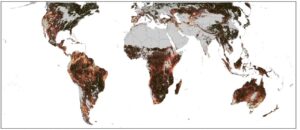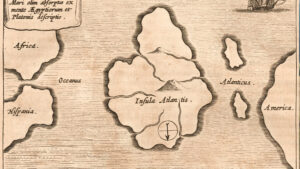What is the geographical center of North America? The stakes are too high for people to agree on an answer.
What is everyone’s obsession with the center of things? We’ve tried to find the center of the Earth, the center of the universe, the center of a city, and even the center of a baseball!
Strangely, finding the center of a continent has become a competition. In a previous article, we explored the geopolitical tug-of-war for the geographical center of Asia. Here, a similar battle takes place for the center of North America between three small towns in the Dakotas.
It all started in 1918. The U.S National Geodetic Survey determined that the center of the 48 contiguous United States is 4.1km northwest of Lebanon, Kansas. It took into account the newly added states of New Mexico and Arizona but excluded Hawaii and Alaska, which were not states at that time. When Hawaii and Alaska joined, the position shifted to Belle Fourche, South Dakota. Note that this does not include Canada or Mexico.

Lebanon, Kansas, the center of the USA. Photo: Shutterstock
Balancing a cutout on a pin
In 1931, another U.S Geological Survey chose to find the center of the entire continent simply by balancing a cardboard cutout of the continent on a pin. Was this accurate? Not really, due to lack of proper technique and the limited technology of the time.
Why did they do it this way? According to some sources, a geographic center is a balance point, also known as the center of gravity. This suggests that finding this point would mean finding the center of a two-dimensional scale model.
The USGS determined the center of North America (including Canada and Mexico) was 10km west of Balta, North Dakota. The closest town to this location is Rugby, which did not hesitate to swoop in and stake a claim.

Rugby, one of the supposed Geographic Centers of North America. Photo: Tim Samuelson/Shutterstock
Despite Rugby’s small size, it quickly became an overnight tourist hotspot for travelers. The town even erected a 4.5m high monument and accompanying flags of the United States, Canada, and Mexico to strengthen its claim.
They enjoyed this status until challenged in 2015 by a bar owner who decided to play the legal game instead of the geographical one.
Bar fight
Just 160km south in Hanson’s Bar in Robinson, North Dakota, a few drunken patrons happened to have a globe on hand. They used a piece of string and a ruler to determine the center of North America. It landed on Robinson. The bar owner, who is also the mayor of Robinson, hurriedly trademarked Robinson as the center. Rugby had not renewed its trademark license for several years. It was a classic case of “you snooze, you lose.”
This turn of events led to Rugby filing a lawsuit against the mayor of Robinson. Rugby won back its title. Yet things did not stop there.

Hanson’s Bar in Robinson refused to concede its coveted title. Photo: penryfamily.com
Previously, the U.S. Geological Survey stated that there was no one way of finding a geographical center. However, it suggested that one must factor in the curvature of the Earth, large bodies of water, and other subtleties.
To put all the craziness to rest, Peter Rogerson, a geographer with the University of Buffalo, published a study that determined a geographical center more accurately.
He said he “calculated the point at which the sum of squared distances to all other points in North America would be smallest -– the mathematical definition of a geographic center.”
Rogerson’s argument is somewhat technical, but he used map projections to turn 3D images into 2D, then got out his protractor and started crunching distances and angles. He discovered that the real center is actually in a town called…Center. Population a mere 588, it lies 164km southwest of Rugby.

Center, North Dakota makes its pitch as the “scientific” center. Photo: City of Center
Tourism and civic pride
The fight between these nearby towns boils down to their desire to be not just another place motorists pass through. They want to be a tourist hotspot, bringing in visitors and helping secure their little town’s future, financially and culturally.
As for the answer to this age-old question: It seems to depend on whether or not you included Hawaii, Alaska, Mexico, separate islands, and other determining factors. This is why the location keeps changing.
If we parse North America today through modern geographical definitions and Rogerson’s more dependable methodology, the town of Center sounds most plausible. It would be interesting to see how this methodology applies to other continents. But clearly, the stakes are high enough that no matter where in the world it is, there will never be universal agreement.






